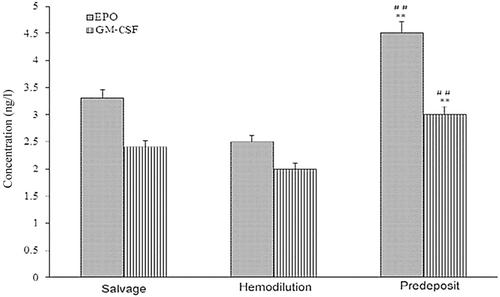Exploration of the Clinical Effect of Different Autotransfusion Methods on Patients With Femoral Shaft Fracture Surgery
Abstract
Objective
To explore the clinical effect of predeposit, salvage, and hemodilution autotransfusion on patients with femoral shaft fracture (FSF) surgery.
Methods
Selected patients with FSF were randomly divided into three groups: intraoperative blood salvage autotransfusion, preoperative hemodilution autohemotransfusion, and predeposit autotransfusion. Five days after the operation, the body temperature, heart rate, blood platelet (PLT), and hemoglobin (Hb) of patients were determined. The concentrations of EPO and GM-CSF in the three groups were calculated by ELISA. The content of CD14+ monocytes was calculated by FCM assay. The growth time and condition of the patient's callus were determined at the 30th, 45th, and 60th day after operation. Cox regression analysis was used to analyze the correlation between EPO, GM-CSF, CD14+ mononuclear content, callus growth, and autotransfusion methods.
Results
There were no statistically significant differences in body temperature and heart rate between the three groups (p > 0.05). PLT and Hb in the Predeposit group were markedly increased compared with that in the Salvage and Hemodilution groups. The concentrations of EPO and GM-CSF in the Predeposit group were markedly increased compared with that in the Salvage and Hemodilution groups. The content of CD14+ monocytes in the Predeposit group was significantly higher than that in the Salvage and Hemodilution groups. Predeposit autotransfusion promotes callus growth more quickly.
Conclusion
Predeposit autotransfusion promoted the recovery of patients with FSF after the operation more quickly than salvage autotransfusion and hemodilution autotransfusion.



 求助内容:
求助内容: 应助结果提醒方式:
应助结果提醒方式:


